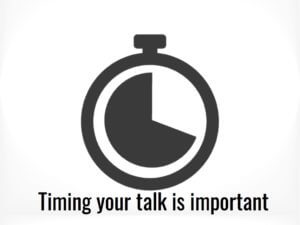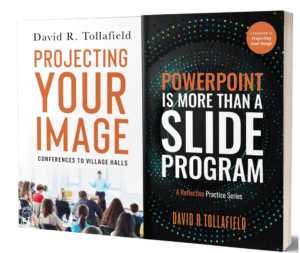Speaking at Conferences
Welcome to another reflective presentation, getting to the point fast should be the aim of the speaker. Speaking at conferences as well as presenting in public does not come easy to everyone. It is not possible to convey all that is important in a short article and so I have split this into preparing your talk and considering anecdotes by using an anecdote. The second part covers writing the abstract for conferences which you can click to read more on ABSTRACTS and submissions.
Anecdotes and such things
The subject of my talk might have been about the importance of finding out how long a patient had their neuroma, but I thought I would venture into a brief discussion about editing talks, and producing that all-important abstract for your professional presentations. I, therefore, want to reflect on a talk that I gave in March, emphasising some of the considerations speakers have to juggle with when submitting a paper for a formal setting. The title of the paper submitted subject material was “Can we learn from the past and improve current attitudes toward Morton’s neuroma management?”
When offered to provide a talk at March’s 2019 Podiatric Surgical Conference my time slot had not been confirmed until I returned from a long trip abroad, one without internet for most of the time. My abstract submission for the conference had been sent in during the Autumn season 2018. We were now in March 2019. I had a hunch this would have to be a short – 10-minute presentation, but I had to await confirmation. The shorter the talk the tougher the timing. You can immediately see from the header slide that a shorter title was going to work better. “Timeline. Does it Matter? The image complements the brief title and just has a simple animation to give a hint of the Tardis appearing and time. I am big on images but short on words on slides.
Be prepared to edit your talk
Shortening a title so it has fewer words is only one aspect of editing. Editing anything to do with speaking at conferences should become second nature. A successful speaker should be flexible. While my talk covered ‘timeline’, focused on just this single feature, the opening anecdote had to be re-jigged rather quickly with only one week to finalise my content. An anecdote can work well but it can crucify your time planning. I sneaked in a related introductory comment as a rhetorical statement which fitted the talk’s main theme.
“No-one in the room would consider not asking a patient how long they had been suffering from a neuroma, and yet when it comes to published papers timeline tends to cover the length of time a study is followed, not how long patients suffered!”
Anecdotes can affect your timing
 importance of self-editing requires one has to be ruthless. Precise timing is essential and not to be left until the last minute. You can fiddle with slides but not the narrative. The narrative and slides work together so you have to take care. Presenting at large conferences is fun especially when you have to meet strict criteria imposed by time and number of slides. Conferences are now wisely suggesting how many slides should be used to their speakers. PowerPoint is both a blessing and a beast with numerous hidden problems. For me, this year, the talk was not just about the subject matter. No doubt I would have liked longer, but as public speakers, we need to fit in and make presentations work as part of the larger scheme. We are only part of the entertainment. One of my aims with any talk is to entertain as much as to educate. That does not mean making an audience laugh. Moving away from the podium, embracing the audience, using slides to optimum effect are the goals behind good speaking. Acquiring personal feedback is not possible within the time constraints of a ten-minute slot.
importance of self-editing requires one has to be ruthless. Precise timing is essential and not to be left until the last minute. You can fiddle with slides but not the narrative. The narrative and slides work together so you have to take care. Presenting at large conferences is fun especially when you have to meet strict criteria imposed by time and number of slides. Conferences are now wisely suggesting how many slides should be used to their speakers. PowerPoint is both a blessing and a beast with numerous hidden problems. For me, this year, the talk was not just about the subject matter. No doubt I would have liked longer, but as public speakers, we need to fit in and make presentations work as part of the larger scheme. We are only part of the entertainment. One of my aims with any talk is to entertain as much as to educate. That does not mean making an audience laugh. Moving away from the podium, embracing the audience, using slides to optimum effect are the goals behind good speaking. Acquiring personal feedback is not possible within the time constraints of a ten-minute slot.
Speaking at Conferences
Speaking at conferences should be fun and something we should all try to embrace despite the fact it may take years to perfect. Building your C.V these days is important and presenting at interviews, small casual groups, to other professionals adds to the portfolio. After 40 years I am keen to help people present, whether to provide talks to professional and non-professional groups. My experience comes from making every mistake in the book. I call this reflective learning or even Black Box Thinking. If speaking is a subject that interests you or a group, do contact me – busypencilcasecfp@gmail.com
Material to support public speaking at conferences by the author

If you are interested in public speaking I launched two books 2020 on Projecting your Image (AMAZON). This is an overall guide to how to set up from scratch, no matter where you intend to speak, or who you intend to speak to. It is designed for the novice but will also allow seasoned speakers to consider their style. The second book acts as both a guide to using PowerPoint as well as building your slide show PowerPoint is more than a slide programme (AMAZON)
Thanks for reading ‘Speaking at Conferences’ by David R Tollafield

Published by Busypencilcase Reflective Communications Est. 2015
April 2019. Updated March 2021


Recent Comments